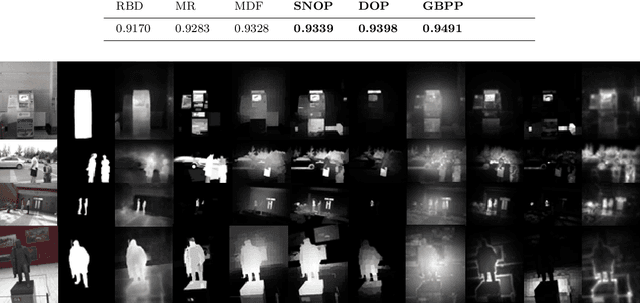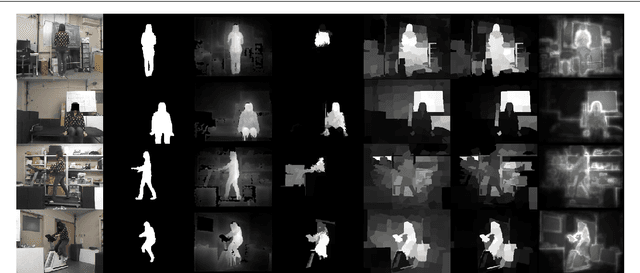Yoshifumi Nishida
An Integration of Bottom-up and Top-Down Salient Cues on RGB-D Data: Saliency from Objectness vs. Non-Objectness
Jul 04, 2018



Abstract:Bottom-up and top-down visual cues are two types of information that helps the visual saliency models. These salient cues can be from spatial distributions of the features (space-based saliency) or contextual / task-dependent features (object based saliency). Saliency models generally incorporate salient cues either in bottom-up or top-down norm separately. In this work, we combine bottom-up and top-down cues from both space and object based salient features on RGB-D data. In addition, we also investigated the ability of various pre-trained convolutional neural networks for extracting top-down saliency on color images based on the object dependent feature activation. We demonstrate that combining salient features from color and dept through bottom-up and top-down methods gives significant improvement on the salient object detection with space based and object based salient cues. RGB-D saliency integration framework yields promising results compared with the several state-of-the-art-models.
* 9 pages, 3 figures, 3 tables, This work includes the accepted version content of the paper published in journal of Signal Image and Video Processing (SIViP, Springer), Vol. 12, Issue 2, pp 307-314, Feb 2018 (DOI: https://doi.org/10.1007/s11760-017-1159-7)
RotationNet: Joint Object Categorization and Pose Estimation Using Multiviews from Unsupervised Viewpoints
Mar 23, 2018



Abstract:We propose a Convolutional Neural Network (CNN)-based model "RotationNet," which takes multi-view images of an object as input and jointly estimates its pose and object category. Unlike previous approaches that use known viewpoint labels for training, our method treats the viewpoint labels as latent variables, which are learned in an unsupervised manner during the training using an unaligned object dataset. RotationNet is designed to use only a partial set of multi-view images for inference, and this property makes it useful in practical scenarios where only partial views are available. Moreover, our pose alignment strategy enables one to obtain view-specific feature representations shared across classes, which is important to maintain high accuracy in both object categorization and pose estimation. Effectiveness of RotationNet is demonstrated by its superior performance to the state-of-the-art methods of 3D object classification on 10- and 40-class ModelNet datasets. We also show that RotationNet, even trained without known poses, achieves the state-of-the-art performance on an object pose estimation dataset. The code is available on https://github.com/kanezaki/rotationnet
 Add to Chrome
Add to Chrome Add to Firefox
Add to Firefox Add to Edge
Add to Edge